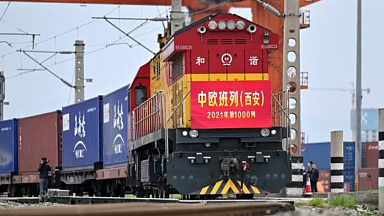Looking back at the past five years, the China-Europe rail freight industry has achieved remarkable results. From 2016 to 2021, the annual number of China-Europe freight trains has increased from 1702 to 15,183 with an average annual growth rate of 55%.
The annual value of goods transportation has increased from 8 billion to 74.9 billion US-Dolloar, which shows a nine-fold increase. Its share of China-EU trade nowadays is 8% in comparision with 1.5% five years ago.
In the early years, high empty container rates and unbalanced of west- and eastbound trips were two major problems, which means high operating costs. Now it has some changes. The heavy container (full-loaded ) rate of freight trains has achieved steady growth. It shows an increase from 77.2% in 2016 to 98.1% in 2021.
The unbalance of China-Europe rail cargo flow is quietly changing. In terms of the train number, the radio of eastbound to westbound trains has increased from 50.6% in 2016 to 81.5% in 2021. That means there are 4 trains heading to China while 5 trains departing for Europe.
However, it cannot be denied that the delivery time of freight trains is getting worse. The quality of service isn’t better than before. As an amount of cargo flowed from the ocean to the railway due to the pandemic, many old customers were unable to get their shipping space. The Chinese border ports faced backlog and congestion, which led to delay of westbound trains. These problems could continue in peak seasons of this year if nothing changes.
The most important reason of these problems is the lack of transport capacity. Investing in infrastructure, improving the level of digitalization, at the same time better planning and arranging freight from a management perspective, and strenghthening coordination and communication with participants of the 1520mm-track gauge area and the European area, may be able to avoid such problems.



